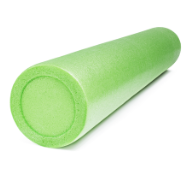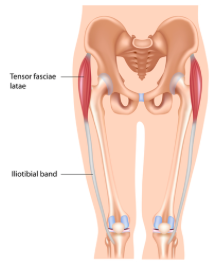[fusion_builder_container hundred_percent=”no” equal_height_columns=”no” menu_anchor=”” hide_on_mobile=”small-visibility,medium-visibility,large-visibility” class=”” id=”” background_color=”” background_image=”” background_position=”center center” background_repeat=”no-repeat” fade=”no” background_parallax=”none” parallax_speed=”0.3″ video_mp4=”” video_webm=”” video_ogv=”” video_url=”” video_aspect_ratio=”16:9″ video_loop=”yes” video_mute=”yes” overlay_color=”” video_preview_image=”” border_size=”” border_color=”” border_style=”solid” padding_top=”” padding_bottom=”” padding_left=”” padding_right=””][fusion_builder_row][fusion_builder_column type=”1_1″ layout=”1_1″ background_position=”left top” background_color=”” border_size=”” border_color=”” border_style=”solid” border_position=”all” spacing=”yes” background_image=”” background_repeat=”no-repeat” padding=”” margin_top=”0px” margin_bottom=”0px” class=”” id=”” animation_type=”” animation_speed=”0.3″ animation_direction=”left” hide_on_mobile=”small-visibility,medium-visibility,large-visibility” center_content=”no” last=”no” min_height=”” hover_type=”none” link=””][fusion_text]
Are We Wasting Our Time?
 Far be it from me to suggest that the application of a particular exercise or therapeutic modality is good or bad; however, I do believe that we need to ask ourselves some logical questions before incorporating an exercise into our routine. What is the nature of the tissues we are trying to effect? What are the forces we are trying to apply to those tissues? Do the two factors mesh in a way that will achieve what I expect from this exercise? Many factors, including goal specificity, current state, volume, preparedness, and appropriateness should be considered when making those exercise decisions.
Far be it from me to suggest that the application of a particular exercise or therapeutic modality is good or bad; however, I do believe that we need to ask ourselves some logical questions before incorporating an exercise into our routine. What is the nature of the tissues we are trying to effect? What are the forces we are trying to apply to those tissues? Do the two factors mesh in a way that will achieve what I expect from this exercise? Many factors, including goal specificity, current state, volume, preparedness, and appropriateness should be considered when making those exercise decisions.
Let’s look at foam rollers as an example; millions of people across North America right now are “rolling” their way towards looser IT bands and more functional muscles, by painfully dragging their adhesion-riddled, tight-muscled bodies over foam rollers. Are they actually getting the results that they think they are? Well, let’s look at this activity logically and discuss the nature of the tissues involved.
Why foam roll?
One of the main reasons people give for using foam rollers is to loosen fascia and break up adhesions which are made up of Fascial cells (fibroblasts), regarding the infamous IT Band in particular. Much research has been done on the nature of this type of tissue and its properties. Fascia interpenetrates and surrounds muscles, bones, organs, nerves, blood vessels and other structures. Fascia is an uninterrupted, three-dimensional web of tissue that extends from head to toe, from front to back, from interior to exterior. It is designed to transmit force as accurately and precisely as possible. It is responsible for maintaining structural integrity; for providing support and protection.
This being said, can we really affect fascia locally if it transmits force through the entire body? Not to mention, do we really have the knowledge base to attempt to change the quality of such an influential tissue and still be certain that we are not affecting something else negatively?
I have also read in more than a few articles and studies that fascia has been measured to have the tensile strength of steel. Can I be so confident that the material of which a foam roller is made can produce enough force to lengthen or stretch something that my Volkswagen is made of? That might be an even better question to ask yourself.
 Of course, there are people who say, “…but I’ve felt my IT bands get looser after a good roll with the foam!!!” My question for them would be, “what makes you think you were changing the status of the fascial tissue of the IT band at all? Could it be that you were simply relaxing the muscles that are attached to the IT band, such as the tensor fascia latae and Gluteus Maximus?”
Of course, there are people who say, “…but I’ve felt my IT bands get looser after a good roll with the foam!!!” My question for them would be, “what makes you think you were changing the status of the fascial tissue of the IT band at all? Could it be that you were simply relaxing the muscles that are attached to the IT band, such as the tensor fascia latae and Gluteus Maximus?”
How does it work?
Since all muscles are enveloped in that same tissue that has that steel-like strength, what is actually happening when you exert compressive forces upon it using a foam roller? Typically modalities that are designed to take away tension and provide mobility within soft tissue are good at doing one thing; changing the way that tissue communicates with the brain. The relaxation response from foam rolling, stretching, deep tissue massage, and even modalities like A.R.T. (Active Release Technique) affect the neurological function of a muscle and dampen the afferent messaging process travelling towards the CNS. This makes contractile tissue less prepared to deal with unexpected load. Let’s consider this for a second… so you are “UN-preparing” your muscles for load! To tell a muscle to stop pulling so hard when pulling was exactly what it was designed to do just doesn’t make a lot of sense to me.
What’s the point?
So why do people use tools like the foam roller? The simple answer is that they associate the result and the feeling during the application of this cylindrical goliath with a positive change from their current state… It feels good! Quite frankly, all I’ve ever seen is a look of utter agony when either beginners or athletes drop themselves full bore into a foam roller and wince away the subsequent 10-20 minutes of “feeling good” until they appear sufficiently pummelled and ready for action. This trend has in fact gained so much popularity of late, that I have actually read recently there are now “Foam Roller
Certifications”! To each their own, I suppose.
This doesn’t mean my assessment of logic and examination of the materials and forces associated with the application of a foam roller negate the possibility that it may still wield positive effects. For example, foam rolling may offer some circulatory and lymphatic benefits. But my objective is to motivate you to do your research and ask intelligent questions before performing an exercise that may have negative implications, rather than simply following the latest trend. This brings to mind one of my favourite quotes by a man named Ed DeBono: “It’s historical continuity that maintains most assumptions, not repeated assessment of their validity”.
~ Post by Peter Chiasson
BSc, MATcms, RTSm, RTS/MAT Instructor
Neuromuscular Rehabilitation Specialist
Biomechanics Assessment and Correction
[/fusion_text][/fusion_builder_column][/fusion_builder_row][/fusion_builder_container]
Deep tissue and MAT is all I need!
Hi ben,
Would you even advice active stretch release techniques? And if you do, on what occasion?
For example; if you see someone who has a small range of motion when do squats and you actively release the piriformis (if there is the problem of course) and immediatly asking function of the muscle again. So you can ‘remodel’ the body, is that a correct way of using active stretch?
Kind regards,
Bram van Unnik
Ps: i love all your articles, so incredibly helpfull !
Use can use foam rolling as compression. The same techniques massage therapist are taught for neuromuscular massage or trigger point therapy and even deep tissue. I’m a LMT, CFT and am certified in Myofasical Realse, Chinese Cupping, sports massage and neuromuscular massage. Myofasical has to be released by holding the skin or pulling on the extremitys for at least 90 seconds before you get any type of release. So as far as release fascia don’t think so but releasing muscle tissue and creating circulation that ultimately leads to healing process definitely. You just need to understand the origins and insertions of muscle and how to roll properly.
Experimenting currently with the foam roll and lacrosse balls to see if will help with recovery..